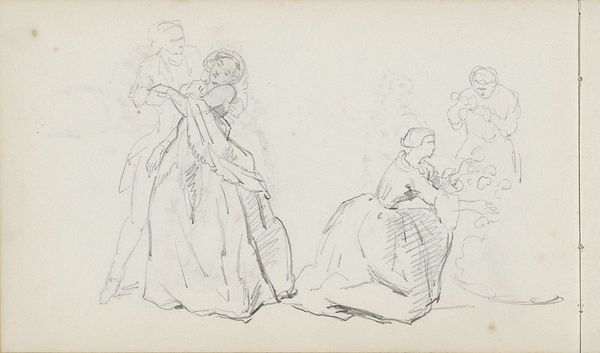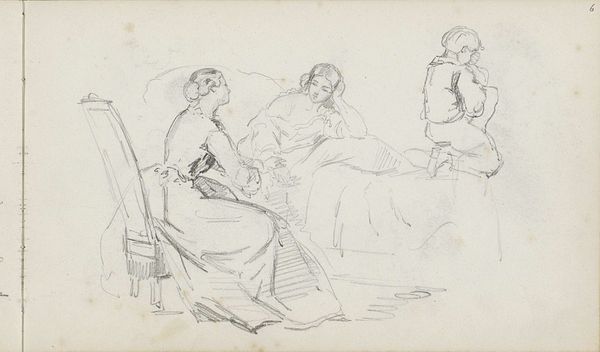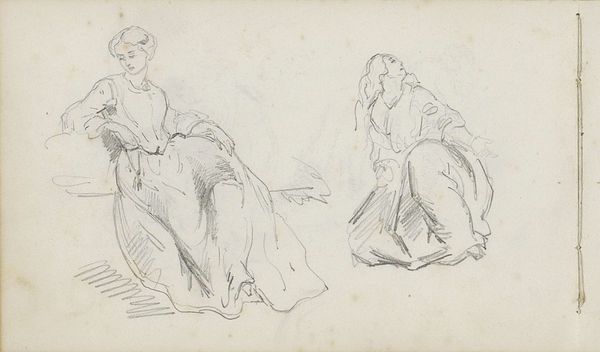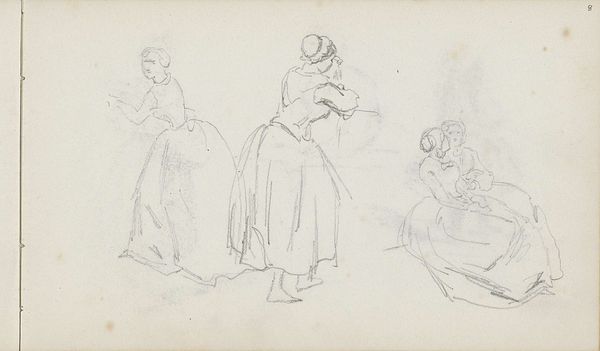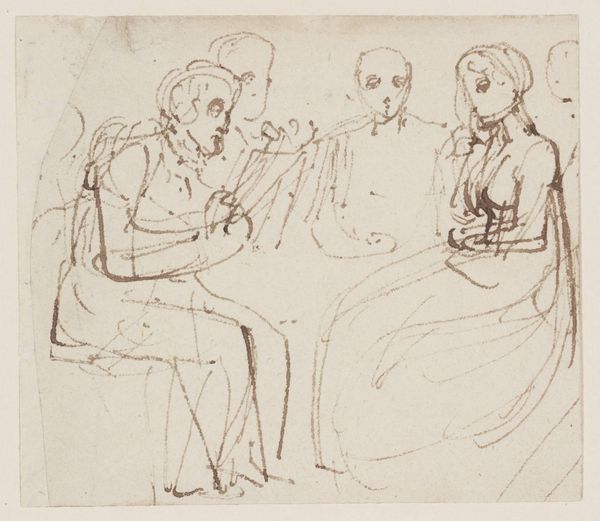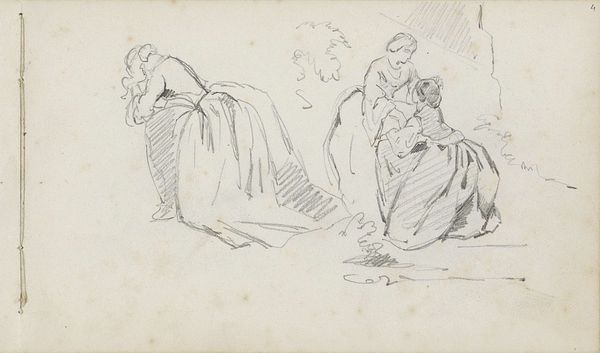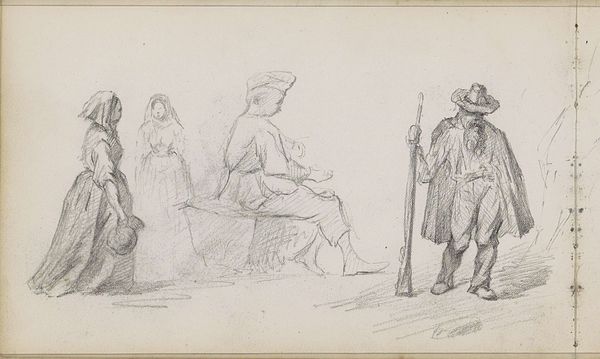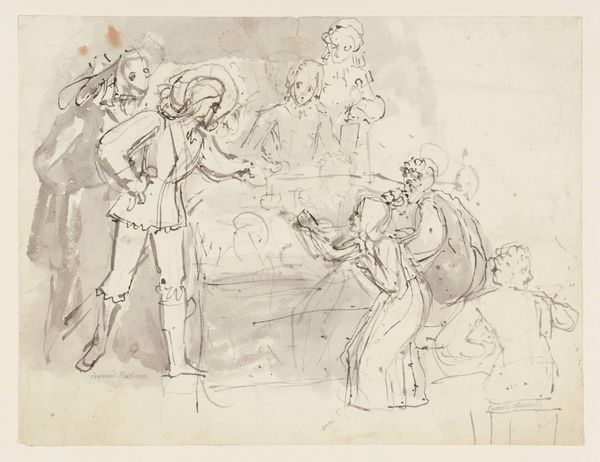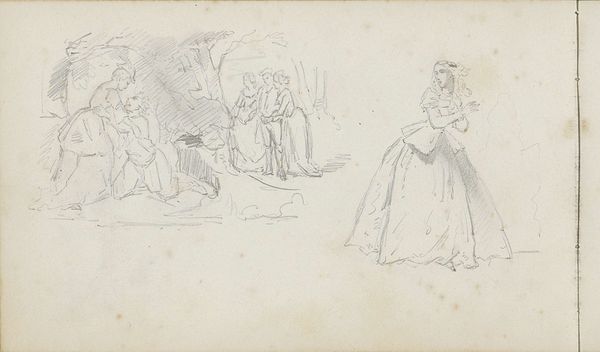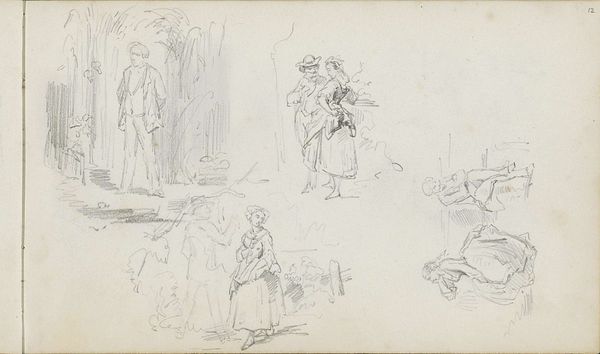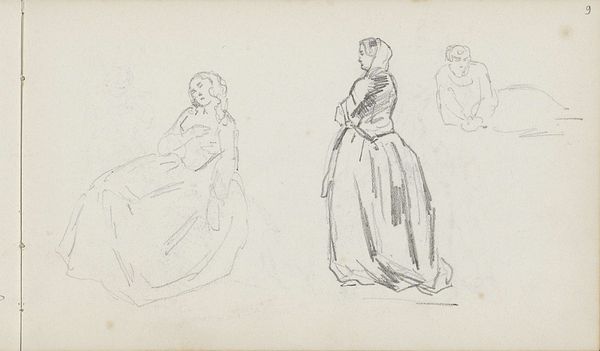
Meisje met hoed, vrouw met een doek en een gitaarspeelster c. 1840 - 1860
0:00
0:00
charlesrochussen
Rijksmuseum
drawing, pencil
#
portrait
#
drawing
#
pencil sketch
#
figuration
#
romanticism
#
pencil
Copyright: Rijks Museum: Open Domain
Curator: Here we have "Meisje met hoed, vrouw met een doek en een gitaarspeelster," which translates to "Girl with Hat, Woman with a Cloth, and a Guitar Player." Created circa 1840-1860 by Charles Rochussen, this work resides here at the Rijksmuseum and is a pencil drawing. Editor: It feels almost like a quick snapshot, doesn't it? These three figures, so casually captured. The mood seems pensive, almost wistful. There's a stark simplicity. Curator: Rochussen was working within a Romanticist aesthetic, although we can see it evolving, can’t we? He became known later for genre paintings. His earlier career reminds us how even what appears informal was structured by specific aesthetic conventions and expectations of the period. He captures three distinct female figures with different roles or aspects of femininity, each occupying her own defined space on the page. Editor: It is interesting to view the piece from the context of his time period, which raises questions about the roles women played and their self-perception within the era's framework. A young girl, back turned and anonymous under the shadow of the wide-brimmed hat, stands adjacent to a more mature woman who seems to sit poised by the table; and finally, there’s a musician; perhaps their potential is implied to be linked to leisure, creativity or even objectification. Curator: We also have to think about how this work would have been seen, perhaps in a sketchbook and certainly not meant to be displayed for public consumption as many history paintings of the time. Perhaps a middle-class affectation that speaks of a family that has access to leisure? Editor: True. I read the composition as deliberately juxtaposing distinct forms of what femininity and gendered work might entail, from performance, as exhibited through the guitar player and almost idle, if we imagine her holding handkerchiefs or cleaning materials. How can we consider this drawing’s legacy for working women if this image was mostly enjoyed as the musings of a Bourgeois class of creatives? It may appear effortless to us but perhaps the image served a social purpose in defining its audiences and subjects. Curator: Indeed. Considering these contexts definitely enriches how we interpret a relatively simple-seeming pencil drawing. Editor: Absolutely. Looking beyond just the technique lets us engage more critically with what Rochussen might be saying, or not saying, about the world around him and allows us to see the artwork as a powerful document of its time.
Comments
No comments
Be the first to comment and join the conversation on the ultimate creative platform.
